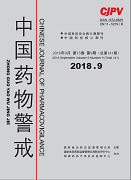|
|
Effects of ERK1/2 Pathway Inhibitor U0126 on Cell Proliferation of Growth Homone Adenoma GH3 Cells
YANG Jingjng, FENG Jie,ZHAO Sida,XU Ning,GAO Hua
2018, 15(9):
530-532.
Objective To study the effect of ERK1/2 pathway inhibitor, U0126, on the cell proliferation and apoptosis of rat GH3 cell line, so as to explore ERK1/2 pathway as a potential therapy target for growth homone adenoma. Methods GH3 cells were divided into U0126 groups and control group. The U0126 groups were given different concentrations of U0126 (10, 20 and 40 nM), and control group was given the equal volume of dimethyl sulfoxide (DMSO). The proliferation of GH3 cells was determined by MTS experiment, and the apoptosis levels were detected by flow cytometry. The p-ERK1/2 levels were measured by western blot. ResultCompared to control group, the cell viability of U0126 (10, 20 and 40 nM) were decreased by 14%, 15% and 19% after 24 h; 19%, 28% and 36% after 48 h; 24%, 37% and 52% after 72 h, respectively. After 72 h treatment, Annexin V positive cells in U0126 groups were 5.3%, 11.4% and 18.5%, and propidium iodide (PI) positive cells were 3.7%, 7.3% and 10.5%. The level of p-ERK protein in U0126 groups was decreased than that of control group, and 40 nM group was 41.7% of that in the control group. The difference was statistically significant (P <0.05). Conclusion The ERK1/2 pathway inhibitors, U0126, can induce apoptosis and inhibit cell proliferation in rat GH3 cells line.
References |
Related Articles |
Metrics
|
